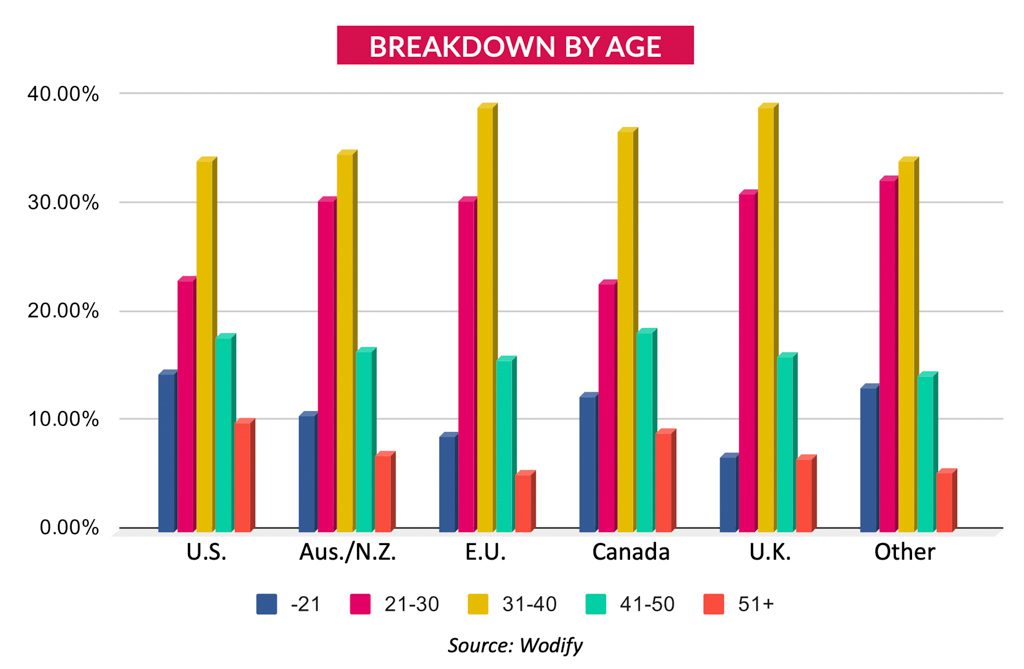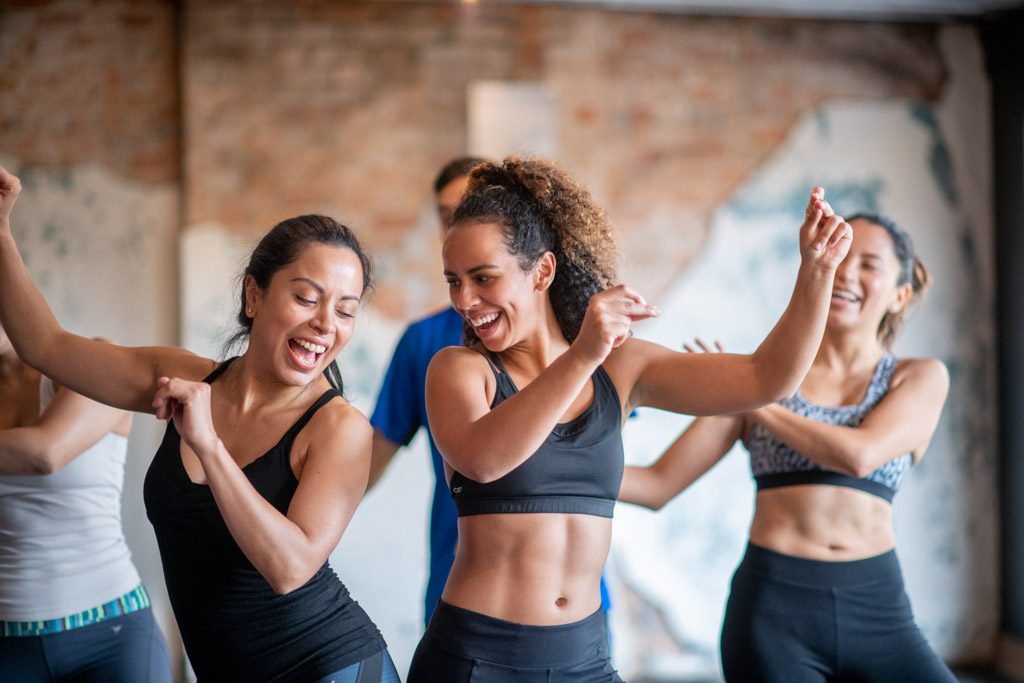In late June, Les Mills released the 50-page report “Gen Z Fitness: Cracking the Code.”
Today, I’ll give you my Top 5 takeaways for microgym owners.

First, you can download the report here if you want to trade your email address and a few details about your gym.
Survey info:
- Gen Z is defined as people born between 1997 and 2012—they are currently between about 11 and 26. The survey mined data from people in the 16-26 range.
- The survey was conducted in March and April 2023 and includes data from 4,028 people in the U.S., U.K., China and Germany.
Over 50 pages, Les Mills fires out a ton of data. As a microgym owner, this is the stuff that stood out to me:
1. The Same Goals?
According to the survey, members of Gen Z have five main goals when it comes to working out: Become fitter, become healthier, look better, feel better, reduce stress.
If you roll a few of those similar goals together, it’s no stretch to say people in Gen Z want to use gyms to feel better and look better.
So are members of the younger generation that different from your older clients?
No, they are not, so your marketing messages don’t need a complete overhaul. If anything, you need to review the channels you’re using to send them (see No. 5, below).
2. Surprisingly Deep Pockets?
Get this: The median monthly Gen Z spend on exercise is US$95.
This is great news—especially given that the survey included responses from people in their teens.
If half of survey respondents are willing to spend more than $100 a month on fitness, microgym owners can rest assured that at least some members of Gen Z will consider higher-value services.
For perspective, this graph shows microgym users by age group (it’s taken from Two-Brain’s “State of the Industry 2022”—get it here):

You’ll note that the 31-40 group is largest in all regions, but the 21-30 group is always second largest, and in most regions the under 21s outnumber 51-plus clients. So members of Gen Z are training at microgyms in sizable numbers.
An interesting note with regard to Gen Z spending: 51 percent of current exercisers are putting some of their cash into a paid fitness app. That’s not to say your gym must have a paid app, but this demographic clearly likes devices and apps.
So if your website looks dated and won’t load on a mobile device, and if you’re still handing out branded physical logbooks, you might consider investing in your digital resources to connect with Gen Z.
3. The Hybrid Generation?
Almost three-quarters of survey respondents who exercise (72 percent) train at the gym on some days and outside the gym on other days.
That’s very interesting, and, combined with Gen Z’s love for tech and apps, might suggest members of Gen Z would be interested in a hybrid fitness program that includes in-person training and outside-the-gym workouts delivered through an app.
You’ll have to test that plan yourself, but I would suggest that tech-savvy younger clients who spent about two years dealing with COVID lockdowns might strongly consider a training plan that includes on-your-own “homework” and in-person interaction (the survey says 38 percent love-love-love the group-class vibe).
4. Committed to Variety
Retention stat: 61 percent of Gen Z gym goers have spent between 6 and 24 months at their gym. That’s significant given that the industry average length of engagement is just 7.8 months (source: “State of the Industry 2022”).
So where do these young gym-goers train? Over 90 percent work out at multi-purpose facilities that offer all kinds of activities people can do whenever the spirit moves them (pin-loaded and cable machine training, group workouts, free weights, cardio machines, body-weight training, functional training, and personal training are the Top 7 activities they do).
Is that stat bad for microgyms? I don’t think so. Two-Brain founder Chris Cooper has long said that a gym’s method is largely irrelevant.
A good coach can design a program with enough variety to satisfy a member of Gen Z, especially if the program is altered regularly with the help of Goal Review Sessions every 90 days: “Great job at the fitness throwdown last week! For your next training block, we’ll focus on getting you ready for your first Spartan Race.”
If you’re strictly a coaching gym, you might not be able to snag the Gen Z people who want the running-wild freedom an access-only facility provides, but that’s fine. Access and coaching are not the same thing at all. And some younger fitness aficionados will want coaching—you just have to find them, build a personal relationship, and make sure you keep the program fresh and exciting at all times.
In fact, 19 percent of those who are not working out said they want coaching in groups or one-on-one settings. That’s your target market.
5. They’re Ready for You to Find Them Online
Here are a few weighty numbers:
- 68 percent of survey respondents who aren’t working out say they will start at home first.
- 51 percent are planning to join a gym.
- 22 percent think gyms are intimidating.
- The Top 4 “gateway workouts” for those trying fitness are walking, running, swimming and cardio machines. Free weights are fifth.
- 50+ percent of Gen Z members use a business’s website to do research before making a purchase, and 47 percent use YouTube to dig into a brand before buying.
- 40 percent of Gen Z members choose TikTok first when searching for something.
Members of Gen Z know they should probably work out, and they’re thinking about it—but they might only be ready to try something on their own (probably walking or running). They also spend a ton of time on their devices.
Here’s what that says to me: You might connect with Gen Z via top-of-funnel video content pumped out on TikTok and YouTube. That content should tell them how they can use fitness—and especially simple cardio workouts—to feel better and look better. Other things you can feature: convenience, variety, an exciting atmosphere, and friendly fitness experts.
I’d DM new followers and anyone who engages with your content immediately, and I would definitely point social content at a solid website with a free downloadable guide: “at-home running” or “on-your-own cardio” are a few ideas off the top of my head. Downloading of that guide should trigger lead-nurturing text messages, perhaps including videos.
That plan is solid with any demographic, but if the Les Mills survey data is accurate, it’s going to hit hardest with Gen Z, whose members who are on their devices a lot.
A Target Market?
So do you need to focus just on Gen Z as a microgym owner?
That depends on your niche. If you know you specialize in serving 30-55-year-old professionals and parents who only have 30 minutes to work out, you’ve got your target market clearly defined already.
But Gen Z is now the largest generation group on the planet, and in just four years its oldest members will be 30.
So even if you don’t focus on younger consumers yet, there’s no harm in knowing who they are, what they like, where they can be found and how to talk to them.

